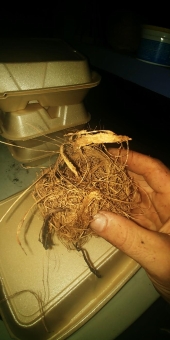Jesse Glessner wrote: I recently viewed the two videos below about a 'fire proof' material and wondered if anyone at permies or anyone working with the rocket stove engineering knew about this material and whether it could be used in the rocket stove risers. It would be interesting to see if the material would hold up over time.
After I saw that first video 2 or 3 years ago I tried making a small cob oven in my backyard with that material as a lining. It turned out awful! I had misunderstood--it is not insulative, but rather heat-resistant and heat-reflective. It needs to burn a bit to become a black body radiator, and it has a pungent smell when it burns, and that smell stayed in my oven. I had put it on moist, and over time it cracked and fell apart. I think you would want to make it in the right shape and dry it first, maybe do it as panels.
In short, it did not work for my application (it was a bad idea--for an oven you want a mass to heat up, not a heat reflector), but I think it possibly COULD work as a rocket riser. I may give it a try by molding it around a large PVC pipe, letting it dry, removing the pipe, burning the inside with a torch, and then using it. I think it will be brittle, and will need support, but I'm guessing it may just work.












